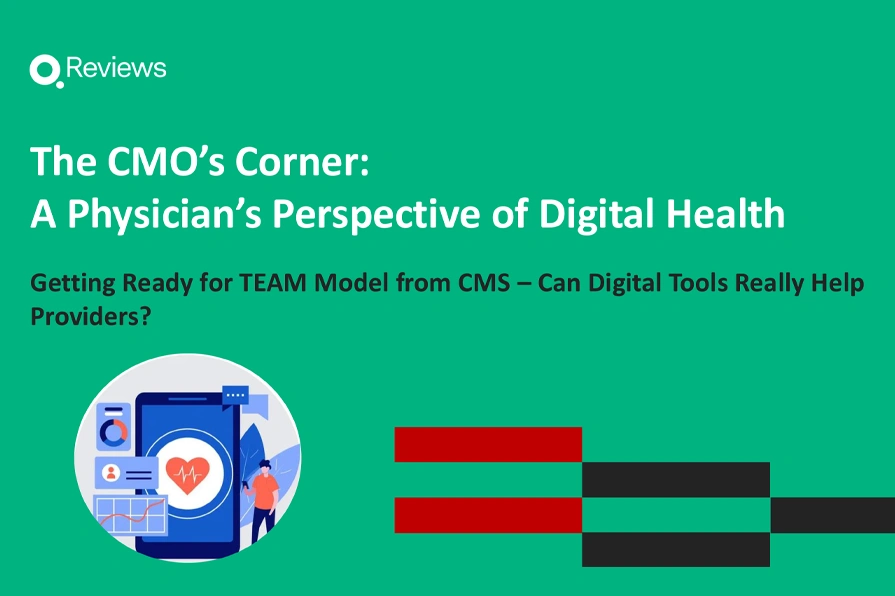
CMS TEAM Payment Model Has Arrived! Are You Ready?

The Transforming Episode Accountability Model (TEAM) is here—a mandatory, episode-based, alternative payment model designed to revolutionize care coordination and cost management for traditional Medicare patients undergoing surgical procedures. Under this model, selected acute care hospitals will be responsible for managing the cost and quality of care from the time of surgery through the first 30 days after the patient’s discharge.
Key Features of the TEAM Model
Episodes of care under TEAM begin with a hospital inpatient stay or outpatient procedure for the following high-cost, high-volume surgeries:
- Lower extremity joint replacement
- Surgical hip femur fracture treatment
- Spinal fusion
- Coronary artery bypass graft
- Major bowel procedures
This model holds participating hospitals accountable for all care costs during the 30-day episode and aims to address the fragmentation of care often seen in traditional fee-for-service (FFS) systems. By improving care coordination, TEAM seeks to reduce redundant services, improve quality, and lower overall healthcare costs.
Bridging Specialty and Primary Care
TEAM aligns with CMS Innovation Center’s strategy to integrate specialty and primary care more effectively. Participants will connect patients to primary care services, fostering long-term health outcomes and creating accountable care relationships. This focus on continuity of care and health equity marks a significant evolution in CMS’ approach to value-based care.
How the Payment Model Works
- Billing and Target Pricing: Participants will continue billing Medicare through FFS and receive target prices for episodes prior to each performance year.
- Performance Assessment: Hospitals are evaluated based on actual Medicare FFS spending compared to target prices, as well as specific quality measures.
- Incentives and Penalties: Participants may earn additional payments if total episode costs fall below target prices (adjusted for quality). Conversely, they may owe repayments if costs exceed targets.
Mandatory Participation
Unlike many prior voluntary payment models, TEAM requires participation from approximately 700 hospitals—around 10% of U.S. acute care hospitals. All hospitals within selected Core-Based Statistical Areas (CBSAs) must participate, including safety-net, rural, Medicare-dependent, and sole community hospitals. This mandatory approach reduces selection bias and attrition, ensuring a comprehensive evaluation of the model’s impact.
Risk Tracks for Diverse Hospital Needs
To accommodate hospitals with varying levels of resources and experience, TEAM offers three risk tracks:
- Track 1: No downside risk in year one; 10% stop-gain in year one, increasing to 20% stop-gain and stop-loss limits in years two through five.
- Track 2: No downside risk in year one; 10% stop-gain in year one, followed by 5% stop-gain and stop-loss limits in subsequent years. Available only to select hospitals, including safety-net facilities.
- Track 3: 20% stop-gain and stop-loss limits throughout the five-year period.
Key Differences from Previous Models
TEAM improves on prior models like the Comprehensive Care for Joint Replacement (CJR) and Bundled Payments for Care Improvement Advanced (BPCI Advanced) by shortening the episode duration from 90 days to 30 days. This reduces the impact of non-surgical complications from chronic illnesses and focuses more on surgical outcomes. Feedback from earlier models has clearly shaped TEAM’s design.
Focus on Health Equity and Climate Resilience
TEAM introduces innovative components aimed at promoting health equity and addressing climate change:
- Health Equity: Hospitals must screen for Health-Related Social Needs (HRSNs) and develop health equity plans. Flexibilities like social risk adjustments help support facilities serving underserved populations.
- Decarbonization and Resilience Initiative: TEAM is the first CMS model to incorporate climate change considerations, addressing how hospital emissions impact patient outcomes and healthcare costs.
Preparing for Success
Hospitals participating in TEAM must invest in smart, data-driven solutions to enhance care coordination, monitor performance, and optimize financial and clinical outcomes. Collaboration among healthcare providers is critical, as is redesigning care processes to meet TEAM’s quality measures. Communication, analytics, and infrastructure upgrades will be essential for success.
Digital Patient Engagement Tools Will Ensure Providers Succeed with TEAM Model
Digital patient engagement tools can play a critical role in helping hospitals succeed in the Transforming Episode Accountability Model (TEAM) by improving care coordination, patient outcomes, and cost management. TEAM focuses on value-based care by holding providers accountable for episodes of care. Here’s how digital tools can contribute:
- Enhanced Communication and Education
- Pre-Episode: Digital tools can provide pre-episode education, helping patients understand their care pathway and prepare for procedures.
- During Care: Tools like texting can facilitate real-time communication between patients and providers, addressing concerns promptly and ensuring adherence to care plans.
- Post-Episode: Automated follow-up messages or reminders can encourage patients to attend follow-ups, adhere to medications, and complete rehabilitation programs.
- Personalized Patient Monitoring
- Remote Patient Monitoring (RPM): Devices integrated with digital tools can track vitals and recovery progress, providing actionable data to providers.
- Risk Stratification: AI-powered tools can identify high-risk patients, enabling targeted interventions to prevent complications.
- Improved Care Coordination
- Digital platforms can streamline communication across the care team, ensuring everyone, including primary care physicians, specialists, and patients, is aligned on the care plan.
- These tools can track tasks and deadlines, reducing delays or errors in the care episode.
- Data-Driven Insights
- Digital tools can analyze large volumes of patient data, identifying trends and opportunities for improvement.
- Hospitals can use these insights to optimize clinical pathways, reduce readmissions, and address gaps in care delivery.
- Cost Reduction
- By improving patient engagement and compliance, digital tools can reduce costly complications, readmissions, and emergency visits.
- Enhanced monitoring can minimize unnecessary in-person visits, saving resources while maintaining quality care.
- Patient Satisfaction and Outcomes
- Engaging patients with intuitive tools improves their overall experience, leading to higher satisfaction scores, a key metric in value-based models like TEAM.
- Empowered patients are more likely to take an active role in their recovery, resulting in better clinical outcomes.
- Scalability
- Digital tools offer scalable solutions for managing large patient populations without increasing the administrative burden on healthcare teams.
By leveraging these tools, hospitals can achieve the triple aim of healthcare in the TEAM model: improving the patient experience, enhancing population health, and reducing costs.
The Future of Value-Based Care
With mandatory models like TEAM, value-based care is no longer optional. Hospitals must act now to assess their physician networks and invest in digital tools to navigate this shift. In today’s challenging healthcare landscape, where staffing shortages persist, these investments are more vital than ever.








